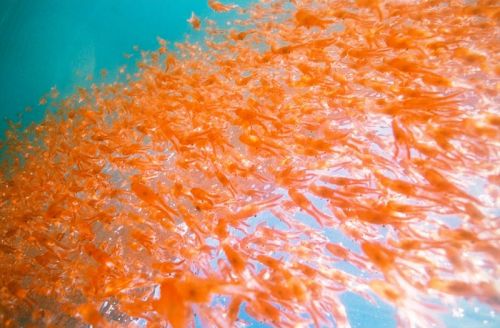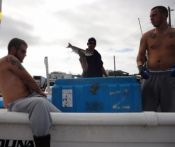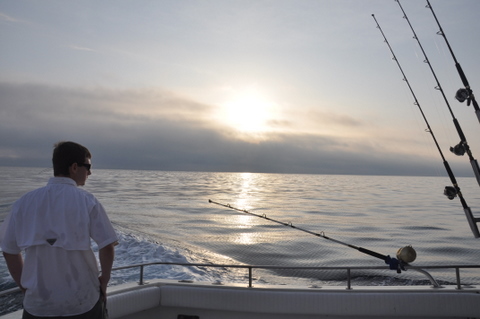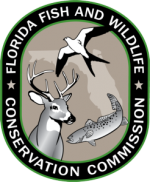Forage fishes are small, schooling fishes that live short, mostly inconspicuous lives. People put anchovies and sardines on pizza not license plates. No one brags about swimming with the scad. There are no T-shirts to save the herring, menhaden, goggle eyes, ballyhoo, or pinfish — are there?
“They’re not really glamorous,” Jason Schratwieser of the International Game Fish Association said.

Showtime is for the manatees, dolphins, and fancy long-legged coastal seabirds while forage fishes just do their job, forming the first, indispensable spiny link in the marine food chain. Some invertebrates are in there, too, sure, but no one is hugging a krill or shrimps, either.
 » Related: For region's mullet fishermen, it's worth the run.
» Related: For region's mullet fishermen, it's worth the run.
“Unless you’re connected in some way – which means you like to eat them, you derive your living from them, or you derive a source of recreation or pleasure from them – forage fishes don’t really resonate,” said Schratwieser, IGFA’s conservation director.
The IGFA, based in Dania Beach, is partner in a coalition that is looking out for forage fishes. The Pew Charitable Trusts and the Florida Wildlife Federation are also committed to better science and management for forage fishes, which represent an estimated one-third of the world’s marine catch.
 Florida’s Fish and Wildlife Conservation Commission joined the effort Thursday. Near the end of a three-day meeting in Sarasota, commissioners approved a resolution that reaffirms the state’s commitment to safeguarding sustainable populations of forage fishes.
Florida’s Fish and Wildlife Conservation Commission joined the effort Thursday. Near the end of a three-day meeting in Sarasota, commissioners approved a resolution that reaffirms the state’s commitment to safeguarding sustainable populations of forage fishes.
“One thing that was noted during the presentation is that while [the FWC] does a good job in monitoring forage fish they admit there is some room for improvement,” Schratwieser said. “People have been focused on a direct management and single-species approach. How many gag grouper can we harvest and what time of year? What size? We should also be looking at what do they eat. People are starting to make that connection now.”
 The FWC’s action isn’t radical but look at it this way, Schratwieser said. “Florida doesn’t really have a forage fish fishery but recognizes that they need to keep an eye on the industry and trends.”
The FWC’s action isn’t radical but look at it this way, Schratwieser said. “Florida doesn’t really have a forage fish fishery but recognizes that they need to keep an eye on the industry and trends.”
According to the FWC, that was the motivation behind a 16-page report on forage fishes by the Division of Marine Fisheries Management, where Schratwiezer used to work.
“The whole forage fish paradigm is relatively new,” Schratwiezer said. “There’s a bunch of new science out there that allows us to see how predators [take] forage fish, which allows us to better determine how many we can safely take out versus how many we need to leave in the water.”
Forage fishes also end up in a range of products, including cosmetics, pet food, and poultry feed. The fishes form huge schools and are usually easy pickings. The feds recently halted the commercial sardine harvest in California, Oregon, and Washington because of worn-out stocks.
That’s a long-term worry, marine conservationists say. As forage fishes go, so go snook, tarpon, spotted sea trout, king mackerel, cobia, redfish, coastal seabirds, and other hungry marine species. An estimate of the global economic impact of marine fisheries is $240 billion worldwide, according to a Pew Trusts study.
“These fish have been overlooked, largely for decades, in terms of fisheries management,” Schratwieser said. “Anybody who fishes understands the concept that big fish eat little fish to grow and reproduce. It’s just the way the food chain works. It only makes sense that everybody involved – and it doesn’t matter if you’re a commercial or recreational fisherman – realizes we need to do what we can do to make sure that this prey base is adequately managed.”
» Photos: Cover, sardines; above, krill; mullet fishermen in Cortez Village.
Outside
Bitcoin mining emissions in China will hit 130 million tonnes by 2024 https://t.co/w6He7so8N2 pic.twitter.com/qYUDtBdeRK
— New Scientist (@newscientist) April 9, 2021
The Gunk Report
For the Blue-Green Algal Bloom Weekly Update from the Florida Department of Environmental Protection, tap here. For DEP's Algal Bloom Sampling Map, tap here.
What, me worry?
» "PLAYING WITH SHARKS," which recently premiered at the Sundance Film Festival, documents diving legend Valerie Taylor.